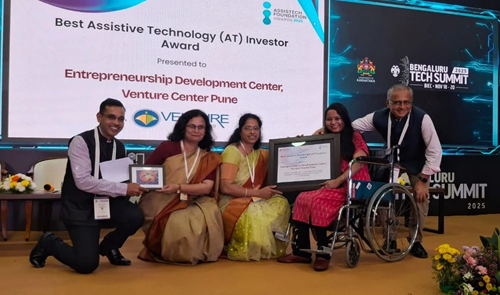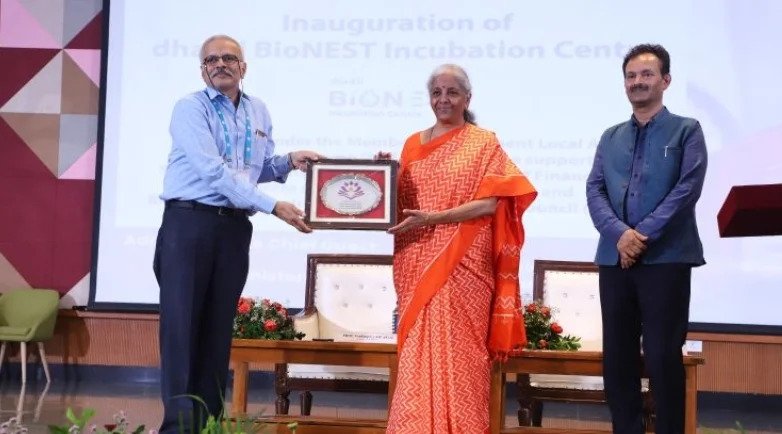Uncertainty to opportunity: Recent trends in the biotech funding environment
The biotech funding environment has undergone significant changes in the last two years. Record-high levels of investment fell drastically, despite the availability of capital, creating more competitive markets that are spurring new approaches and perspectives within emerging biotech even as key funding players reshape the field. This incredibly dynamic sector is busy transforming uncertainty to opportunity.

Source : https://www.iconplc.com/
Market snapshot
The biotechnology sector’s funding environment has undergone significant changes in the last few years, demanding creative solutions in response. The record-highs of the bull market that gained critical mass through the late 2010s and early 2020s has stopped short. Interest rates are up and the once-hot biotech IPO market has crashed, alongside its related model, the SPAC, effectively reducing capital and returns expected by Series A investors, and market instability has shaken investors. The quick-flowing funds that were in the market in 2021 have been bottled up by 2022, resulting in fundraises that have – after two record-setting years – dipped 24%.
Tide changes
Venture capital funding, typically the primary source of investment for biotech, especially early-stage, is at its lowest level since 2019. VCs have battened the hatches as they triage their portfolios, with their portfolio companies making survival cuts to pipelines and staff. With VCs shifting focus from growing to surviving, more of their capital is reserved for their existing portfolios – meaning less is available for investment.
The recent turbulence in the banking sector stoked anxieties in the market, but rapid moves to stabilise the situation and secure the deposits held on behalf of thousands of biotech companies seem to have alleviated the tension.
Large pharma uses the biotech market to augment their pipelines, but they have been sitting on substantial reserves of capital with Big Pharma stockpiling upwards of $330bni. M&A activity has also been sparse, although some large deal announcements have been made recently, including Merck & Co.’s acquisition of Prometheus Biosciences for a total value of $10.8bn, and GSK’s acquisition of BELLUS Health Inc, valuing it at $2.0bn. More M&A is expected in the face of the looming patent cliff for large pharma, because biotech is still the industry’s innovation machine.
More mouths to feed
There are more biotech companies now than ever before. Consequently, there is a large tranche of early-stage biotech in need of venture funding, precisely at a time when access to that funding has stifled. The funding market has become incredibly competitive, even in Series A which has been the most stable, and traditionally last to be impacted by macroeconomic pressures, compared to late stage and crossover investmentsii. Bay Bridge Bio estimate there to be an $8bn shortfall of follow-on capital for Series A companies compared to a year agoiii.
This lack of growth capital for many biotech companies means they must be very cautious in their spending, again resulting in pipeline culls and rounds of layoffs. In total, more than 100 biotech companies laid off employees in 2022, with more anticipated through 2023iv. Reprioritising pipelines and optimising development strategies will help biotech stretch their cash to advance their programs in the absence of additional capital investment.
Emerging funding trends
Although existing funds have tightened the purse strings, new funds are forging ahead, showing positive vital signs for the sector in Europe. Some very large EU-based funds have recently closed, including Forbion, who closed more than $1.5bn across two separate funds, and Gilde Healthcare who raised $657m for their Venture & Growth VI fund. Other EU funds closed recently include Lux Capital, Wellington, Canaan, Cure Ventures, EQT Life Sciences and SR One, so there is plenty of capital available to support the right science.
These newly minted funds are not just a sign of good health, they are a vital source of infusion – in early 2022, emerging VCs outpaced established VCs in the number of new Series A investmentsv. With smaller or non-existent portfolios, emerging VCs have the freedom to invest more of their funds as opposed to established VCs with fuller portfolios to keep afloat.
Additional sources of private capital are starting to come in from some large private equity firms as they acquire VCs to diversify their own portfolios (e.g., Blackstone’s acquisition of Clarus Ventures in 2018, and more recently EQT Group Stockholm’s acquisition of Life Sciences Partners of the Netherlands). As PEs seek new and exciting channels for investment, this trend is likely to continue.
Biotech forges on
The European market continues to exhibit strong R&D activity. Although American markets have more favourable valuations, Europe has historically been and continues to be a significant accelerator for biotech and life science progress.
Biotech have had to adjust their approaches to securing funding amid a much more competitive market for the funds that are distributed. The IPO route that offered an efficient profitability option with good historical returns, has been essentially closed for the past year due to the downturn in global stock markets (particularly NASDAQ), and private investment has become highly selective, requiring clearer demonstrations of value and utility. The other funding options open to biotech are being acquired by larger pharma or striking partnership deals. Large pharma has long used biotech to augment their development pipelines, but they prefer high-quality, de-risked assets (Prometheus Biosciences’ lead asset was Phase 3 ready when it was acquired for $11bn).
We are seeing more biotech perform early economic evaluations at proof-of-concept and pre-regulatory approval stages, but more strategic planning and positioning will be key for navigating the new funding environment and landing the critical Series A investments.
Uncertainty to opportunity
Biotech’s contribution to the global R&D pipeline has been growing in the last decade, with 2018 seeing emerging companies account for over 70% of the entire global industry pipeline, according to BIO Industry Analysis, May 2018. Now, with larger early fundraises in the past two years and the continued drop-off in subsequent series raises, there are fewer viable options for early exit strategies and liquidity events, and more biotech are taking their development further themselves before partnering or selling.
The current funding climate requires biotech to think harder about their approach than they had to in the bull market. Now, they are outsourcing more strategically and designing more cost-effective trials to stretch their cash runways and carry them further along the development continuum. For our part, we see more biotech seeking consultative partnerships, trending away from the smaller or regional service providers to leverage the breadth of expertise offered by global CROs. Biotech are leveraging early engagement opportunities with full-service partners to optimise the impact of external expertise across the development program, and to maximise their probability of success.
Published on : 26th September, 2023
BIO-TECH
-
Venture Center receives ATF 2025 Honour for supporting assistive technology innovations 24th November, 2025

-
Vaidam Health and Vanuatu's Ministry of Health ink MoU to strengthen cross-border healthcare access 20th November, 2025

-
Whale Tank Biocatalysts hosts Startup-Investor Meet WT 3.0 in Hyderabad 17th November, 2025

-
BTS 2025 to host India’s largest entrepreneurship platform “Future Makers Conclave” on Nov 20 06th November, 2025

-
Bessemer Venture Partners leads Rs 125 Cr Series A funding in fertility startup Pluro 04th November, 2025

-
dhaRti BioNEST Incubation Centre opens at Indian Institute of Technology (IIT) Dharwad 15th October, 2025

-
Bartronics India makes strategic investment of up to Rs 50 Cr in Huwel Life Sciences 30th September, 2025





